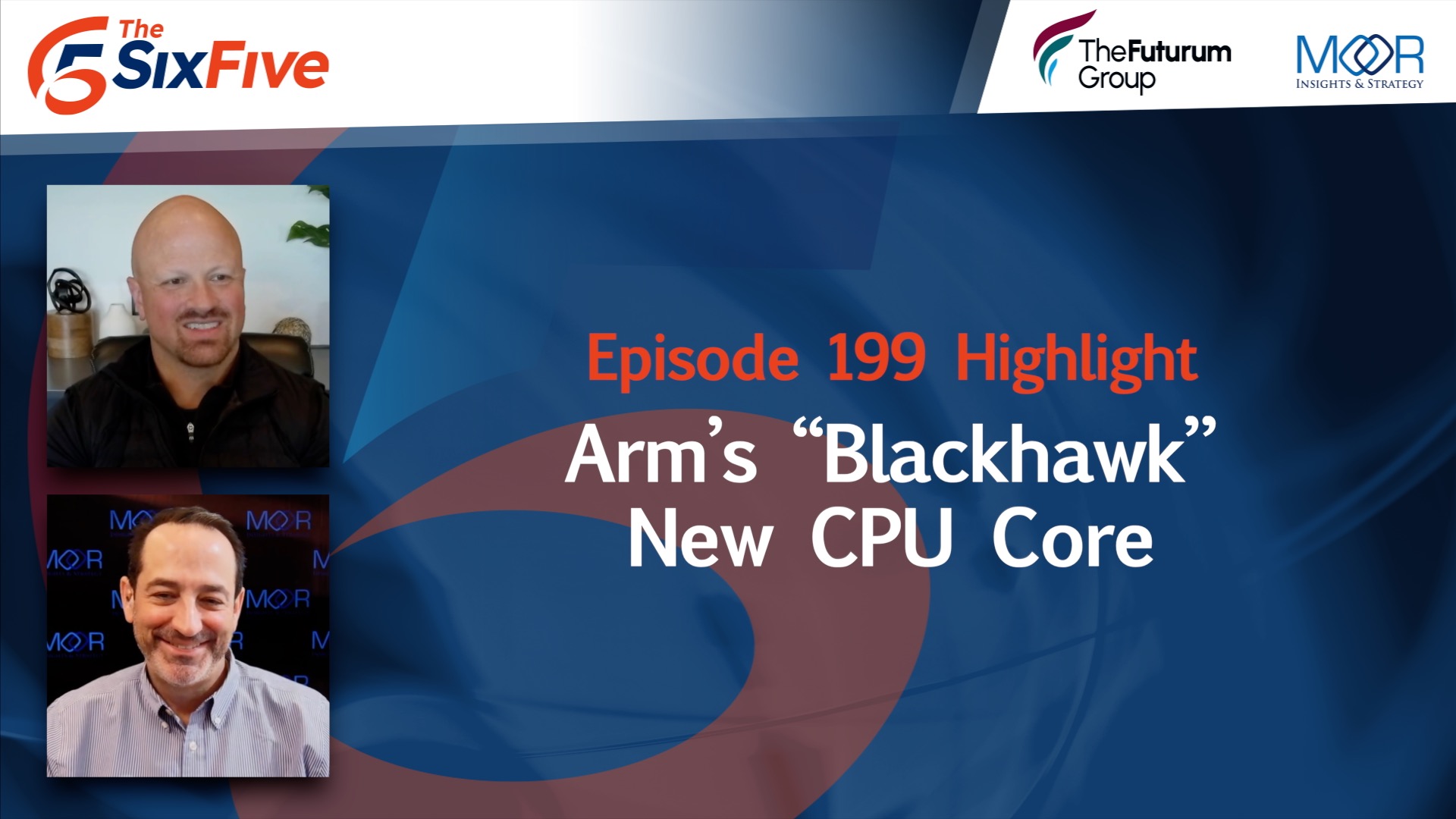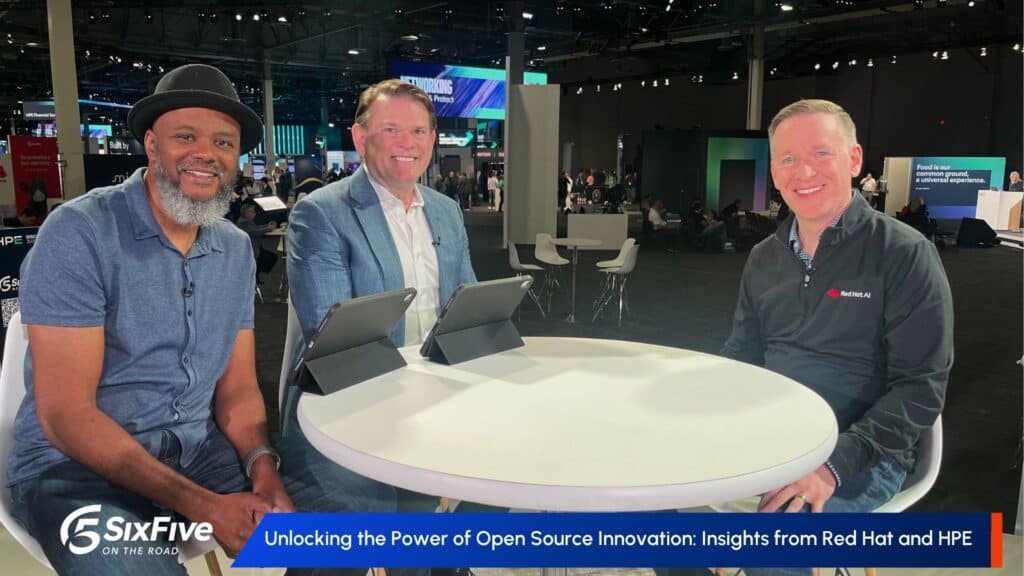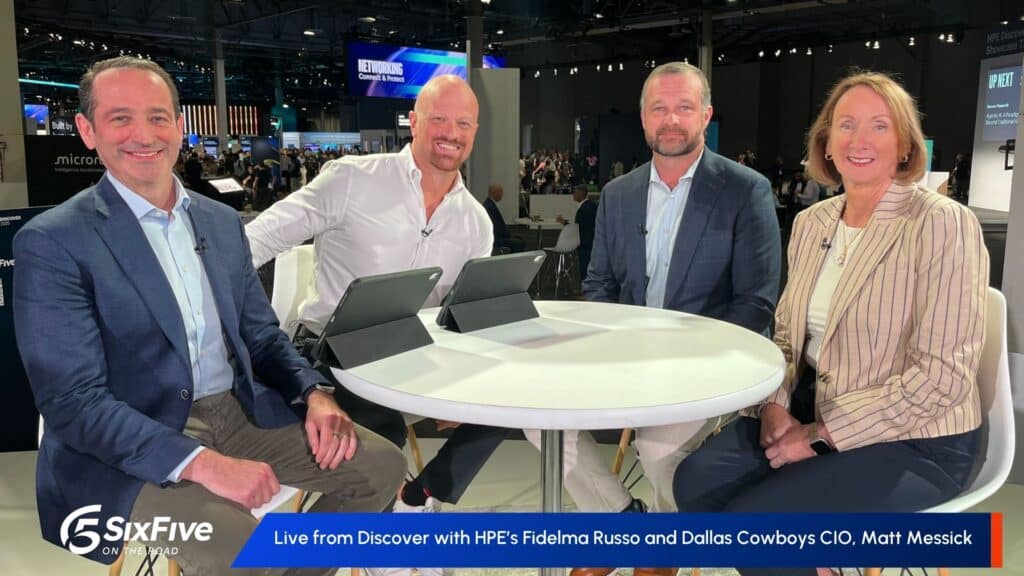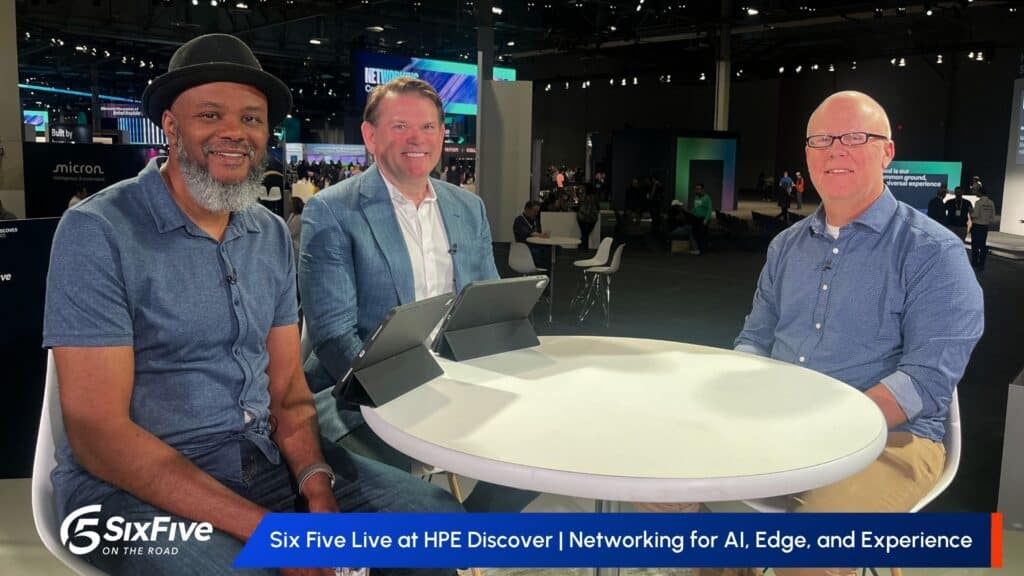The Six Five team discusses Arm’s “blackhawk” new CPU core.
If you are interested in watching the full episode you can check it out here.
Disclaimer: The Six Five Webcast is for information and entertainment purposes only. Over the course of this webcast, we may talk about companies that are publicly traded and we may even reference that fact and their equity share price, but please do not take anything that we say as a recommendation about what you should do with your investment dollars. We are not investment advisors and we ask that you do not treat us as such.
Transcript:
Daniel Newman: You wrote a great piece on Forbes, and then you and I actually perused the Arm party at CES, in which I was hanging out with you. And I had to hear no less than 10 times, “Hey Pat, great Forbes article.” It’s like, yep, you’re great. And they was like, “What’d you write?” And I was like, “Hey Pat, great Forbes article.”
Patrick Moorhead: Well, here’s the good news. I didn’t write it on Forbes. I wrote it on my own site, which-
Daniel Newman: I’m sorry. I’m sorry.
Patrick Moorhead: No, no, no, no. I just want to make sure people-
Daniel Newman: I heard, “Great article.” It was so assumptive of me.
Patrick Moorhead: No, I wrote a research note. We’re writing more and more on our own website. I mean, we’re putting out more research grade material like we did for Blackhawk. But here’s the skinny, folks. Arm’s business model historically has been, let’s give an architectural license to certain companies, very narrow, to address markets and geographies. So here, in smartphones, with Apple, based out of the United States, they gave Apple an architectural license so they could go off and build their own CPU. Now, designing your own CPU and building it can cost between about half a billion dollars all in. I know that because I used to do this for a living. It’s very expensive. And it is getting easier, don’t get me wrong. But if you’re doing a grounds up design, it is very expensive to take it out to multiple platforms. So the other business model, if it’s not an architectural license, is to take some off the shelf IP from Arm. And there’s varying levels of engagements that Arm has. Arm makes very little on the architectural licenses if there’s a ton of volume, like Apple.
Daniel Newman: It’s the law of diminishing returns.
Patrick Moorhead: No, it totally is. Then you have somebody like Qualcomm that comes along with the NUVIA based architecture, and they’re suing each other, by the way, on this. But let’s put that aside. You have the two largest smartphone platform providers on the planet that have architecture licenses, and the performance is so much better than what you get with Arm off the shelf, it becomes an issue. It becomes a market issue. And quite frankly, it’s a business issue for Arm.
So the big announcement was that Arm’s Blackhawk CPU is designed to be the best smartphone CPU core this year. And these were their words that they communicated to me, not mine, or inferring based on some rumor. I had a conversation with Arm, got relatively some basic information about it, asked some Q&A. But the goal here is literally that this Blackhawk CPU will outperform the leading edge from Qualcomm and Apple. And that is a big, bold statement out there, almost as audacious is saying that Neoverse would be higher performance than Xeon, which, by the way, on certain workloads, it is. And we see that at AWS with graviton, and we’re seeing a lot more people sign up. Like Microsoft brought out their new Arm-based SOC, and it’s likely that Google will too.
So is it audacious? Absolutely. Is this a giant check to write to say that this would add these performance levels? And by the way, I’m assuming performance levels at the right wattage and at a reasonable cost. But it’s a big deal. It’s a big deal for Arm, and I think it’s a big deal for the industry. So you can imagine people like MediaTek, Samsung related to Exynos, even though all the premium stuff today is Qualcomm. But I love the competition. That’s where I’ll end this. More competition is good. Arm has to prove a lot of things. But by the way, this design’s done. If phones are going to be out at the end of this year, then it’s done. The paint is basically dry and it needs to be implemented. So they must be very confident in what they think that both the Qualcomm NUVIA roadmap is, but also Apple.
Daniel Newman: Yeah, great research note, Pat, on Moor Insights & Strategy’s blog. I do appreciate that. Look, you did a really good job, and your assessment hit the high notes of what I was thinking about. And the things I’m thinking about is, Arm has been a licensing company and it has been a licensing company in an era where very few companies could build meaningful chips. And so now they are a licensing company in an era where it’s becoming increasingly en vogue and possible for more companies with resource and capacity to design, and not only design chips, but to take something out of the box, put it into use and create competitive products.
In 1995, people really cared what chip was in their PC. I don’t know that that’s as true anymore. And that’s not really just my interpretation. This is from talking to the leaders of the OEMs about silicon diversity and hearing what they are saying about, well, is it good to have 3, 4, 5, 6 variants of silicon? And of course, you and I will always say it’s great for competition. It’s good for competition, but is it good for the consumer? And I don’t know that the consumer knows.
Someone said to me, Pat, that Apple could take a dump in a box and sell 10 million units. And that doesn’t exactly correlate to Arm. But my point is that if the right company is selling the product, people will buy it. And so Arm is seeing an increasing financial gain and, especially now as a publicly traded company, has to figure out a way to grow its revenue, and that’s a per device growth of revenue, in the areas at which they compete. We know that the work they’ve done, excuse me, the work they’ve done in data center has been successful, profitable, but it’s still very small for Arm. It’ll grow.
But the way they’ve been able to support and enable a whole new group of entrants into the market, they’ve been able to do very well from that, the more they can create a high value IP licensing agreement where people will take and do minimal modification, and in the case of their lowest level licensing, there’s no modification. Am I right, Pat, about that, about no modification to the ISA? But this is a way you sort of hedge. We know there is an ongoing litigation that’s going on with Qualcomm and Arm. I’m sure this has something to do with it.
On the other side of this though, Pat, I’ll say if Arm can build a leading end, high-end processor that you can take right out of the box, it sort of brings some interesting questions to OEMs that have either, A, spent a lot of time and money to modify them. And B, what’s the value of that work, the architectural work to modify them if someone can just take it out of the box and bring it out to market? It also brings the opportunity back to the forefront for RISC-V, I think. But I will say, we know that’s a longer journey.
So if some of the companies feel that Arm is becoming too much of a competitor and they don’t want to keep building the Arm ecosystem, could they go a different direction? I don’t see that happening very quickly. But I think that risk always exists, and I think it’s a calculated risk right now for Arm. But look, they’re moving very quickly, Pat. They’ve got pressures of being a public company. They’ve got a reason to want to get in right now with this AI cycle. And the sooner this can hit the market and be available, the more the company can potentially benefit from it. I’m going to leave that there.
Author Information
Daniel is the CEO of The Futurum Group. Living his life at the intersection of people and technology, Daniel works with the world’s largest technology brands exploring Digital Transformation and how it is influencing the enterprise.
From the leading edge of AI to global technology policy, Daniel makes the connections between business, people and tech that are required for companies to benefit most from their technology investments. Daniel is a top 5 globally ranked industry analyst and his ideas are regularly cited or shared in television appearances by CNBC, Bloomberg, Wall Street Journal and hundreds of other sites around the world.
A 7x Best-Selling Author including his most recent book “Human/Machine.” Daniel is also a Forbes and MarketWatch (Dow Jones) contributor.
An MBA and Former Graduate Adjunct Faculty, Daniel is an Austin Texas transplant after 40 years in Chicago. His speaking takes him around the world each year as he shares his vision of the role technology will play in our future.





